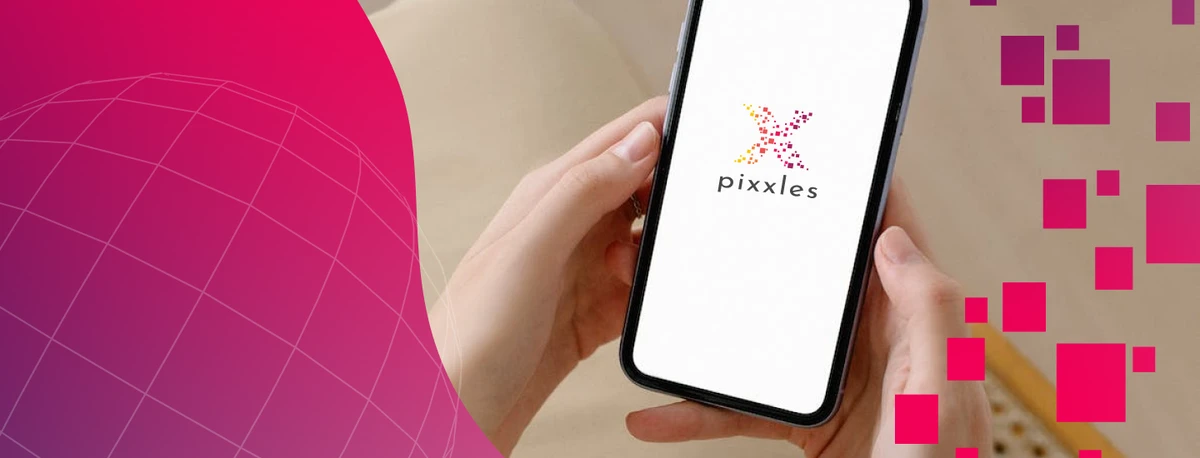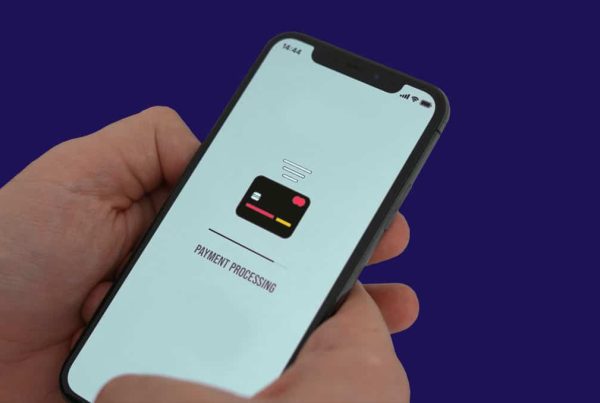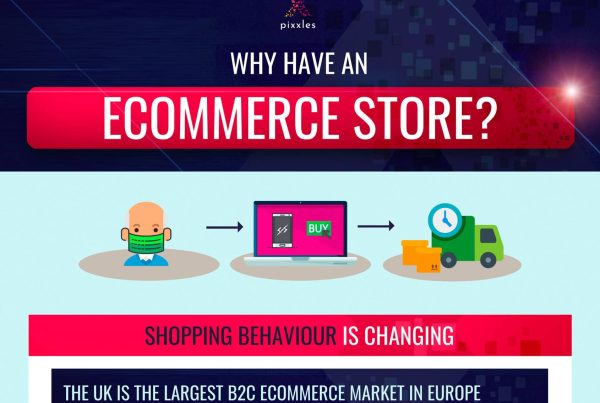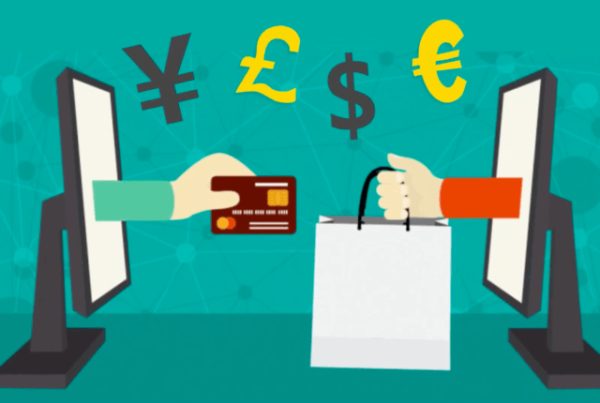Mobile Payment Technology Summary
Mobile payment systems allow financial transactions via mobile devices. Users typically download a mobile wallet app and input their card details, which are then tokenized for security. When making a payment, the app uses technologies like NFC or MST to communicate with the payment terminal. The tokenized information is sent, and the transaction is authenticated and processed, with the details kept secure throughout, making payments quick, convenient, and secure.
Firstly… What Is A Mobile Payment?
Simply put, a mobile payment is a financial transaction that occurs on a mobile device.
It’s a form of payment that has grown significantly with the increase in smartphones, with billions of users worldwide using it as an alternative to traditional payment methods.
In fact, mobile payments are becoming so popular that by 2030 there will be over 4 billion people making mobile payments.
To manage such a high volume of demand, mobile payment systems need to be robust, scalable, and secure.
» MORE: Are you ready to start accepting card payments online?
How Do Mobile Payment Systems Work?
Today, most mobile payment devices use Near Field Communication (NFC) technology, which has become somewhat of a standard thanks to the technology’s simplicity and robust security features.
NFC technology operates by initiating communication between two NFC-enabled devices when they’re brought within a few centimeters of each other. This allows for the quick and seamless transfer of encrypted data without the need for physical contact.
The NFC payment process typically involves the following steps:
1. Activation
When a user brings their NFC-enabled mobile device near a payment terminal, the terminal emits a signal that activates the NFC chip in the device.
2. Connection
The two devices establish a connection via radio waves. This connection allows them to exchange data.
3. Authentication
The mobile device and payment terminal authenticate each other. In the case of mobile payment, this may involve checking a digital signature or validating a one-time token.
4. Transaction
Once authentication is successful, the payment information is transferred from the mobile device to the payment terminal, and the transaction is processed.
Mobile Payment System Requirements
Regardless of the technology a mobile payment system uses (there are other kinds besides NFC), the system must have several key attributes:
- Security
- Scalability
- Interoperability (compatible with a variety of hardware and software)
- User-friendly Interface
- Fast Transaction Processing
- Fraud Detection and Prevention
- Compliance
- International Transactions
- Integration (able to integrate with POS systems, ecommerce platforms, etc.)
- Offline Capabilities
Mobile Payment System: What Happens When A Payment Is Made?
When purchases are made, the customer’s payment information is encrypted and then transmitted to the merchant’s payment terminal.
This is a crucial step in the mobile payment process, and it’s designed to secure the customer’s sensitive financial information.
Here’s a more detailed step-by-step explanation.
Initiation
The payment process is initiated when a customer decides to make a payment with their mobile device. They can do so by opening a mobile wallet app and selecting the card they wish to use or by using a peer-to-peer payment app.
Tokenization
The customer’s payment information is then immediately tokenized. This means that the actual card or account details are replaced with a randomly generated token.
The token represents the customer’s account and can be used without revealing the actual account details.
Transmission
The encrypted data, including the token and the transaction details, are then transmitted to the merchant’s terminal.
This is done via Near Field Communication (NFC), Magnetic Secure Transmission (MST), or even a QR code scan, depending on the technology being used.
Authorization
The payment terminal sends the token and transaction details to the merchant’s acquiring bank. The acquiring bank then sends this information to the customer’s issuing bank for approval.
Verification and Approval
The issuing bank verifies the transaction details and the token. If everything is in order, it approves the transaction. This process is almost instantaneous.
Completion
Once the issuing bank approves the transaction, this information is sent back to the merchant’s terminal, and the payment is accepted. The customer will then see a notification on their device indicating that the payment was successful.
Settlement
At the end of the day, all transactions are sent in a batch from the merchant to the acquiring bank for settlement. The acquiring bank communicates with the issuing banks to transfer the funds.
Mobile Payment System on the Customer and Merchant Sides
Customer side
On the customer side, the way mobile payment systems work is rather straightforward. To set up a mobile wallet, you have to download your preferred app and follow its sign-up process.
This includes verifying your identity and setting up security features, after which you can start making peer-to-peer and pay-to-business mobile payments.
Merchant side
A merchant, however, needs to follow a different process.
To accept mobile payments, a merchant has to select a payment processor that supports mobile transactions and then create a merchant account.
Depending on the type of mobile payments the merchant intends to accept, they will need to obtain specific hardware and software, such as an NFC-enabled POS terminal and QR code software.
Furthermore, the new system must be integrated with existing sales and accounting systems, and prior to customer usage, it needs to be tested to make sure it works properly.
» MORE: Run a business? Improve your transactions with easy online payment solutions
What Are The Types of Mobile Payment Technologies?
Magnetic Secure Transmission (MST)
MST technology, primarily used by Samsung Pay, generates a magnetic signal that mimics the magnetic strip on a traditional payment card. This allows it to work with older point-of-sale systems that do not have NFC capabilities.
SMS
Some mobile payment systems use Short Message Service (SMS) to facilitate transactions. In this setup, the user sends a text message to a specific number to initiate a payment. This is particularly useful in regions with low smartphone penetration or poor internet connectivity.
Payment Link
Payment links are a type of mobile payment where a unique link is generated for a specific transaction. This link can be sent to the payer via email, SMS, or messaging apps.
Once the payer clicks the link, they’re directed to a secure payment page where they can complete the payment using their preferred method.
This system is often used for ecommerce transactions and for peer-to-peer payments.
QR Code Payments
QR (Quick Response) codes are two-dimensional barcodes that can be scanned using a smartphone camera to make payments.
This technology is widely used by services like WeChat Pay and Alipay.
Bluetooth Low Energy (BLE)
This technology uses low-energy Bluetooth connections to establish a communication link between two devices for the purpose of making a payment.
Cloud-Based Mobile Payments
These systems leverage cloud technology to store payment data and process transactions. When a transaction is made, the payment information is retrieved from the cloud and used to complete the transaction.
This enables payments on devices that don’t have NFC or other similar technologies.
Cryptocurrency Mobile Payments
Some mobile payment systems allow users to make payments using cryptocurrencies like Bitcoin. These systems use blockchain technology to securely process transactions.
Near Field Communication (NFC)
NFC is a contactless communication technology that allows for the transfer of data between two devices placed in close proximity to each other, typically a few centimeters.
This is the technology that powers most tap-to-pay systems like Apple Pay and Google Pay.
» MORE: Before accepting NFC mobile payments, here are important facts to remember
Types of Mobile Payments
Mobile Wallet
A mobile wallet is a digital version of your physical wallet, storing your payment card information securely on your mobile device. Examples include Google Pay, Apple Pay, and Samsung Pay.
Mobile Payments In-Store
Mobile payments in a physical store rely on NFC or MST technologies to communicate with point-of-sale terminals.
The customer simply holds or taps their mobile device near a terminal to initiate payment.
Mobile Peer-to-Peer Payments (P2P)
Mobile P2P payments are transactions that occur between two individuals through a mobile app.
Apps like Venmo, PayPal, and Cash App facilitate these types of payments, allowing users to send and receive money easily using their smartphones.
Merchant Method
The Merchant Method is where merchants offer their own mobile payment apps to customers, usually integrated with a loyalty rewards program.
Examples include Starbucks and Walmart’s mobile apps, which allow customers to pay directly via the app, earning and redeeming rewards in the process.
mCommerce
mCommerce stands for mobile commerce and just means that you purchase goods or services online through a mobile device.
Direct Carrier Billing
This method allows users to make purchases by charging payments to their mobile carrier bill. It’s typically used for digital goods and services.
Mobile Banking
Many banks have their own mobile apps that customers can use to transfer money, pay bills, and perform other transactions.
Cryptocurrency Mobile Payments
With the advent of digital currencies like Bitcoin, some mobile apps allow users to pay with cryptocurrency, providing another mobile payment method.
» MORE: Read about 9 alternative payment methods that are available today
Benefits of Using Mobile Payments
Mobile payments come with two primary benefits that make them very popular.
Mobile Payments Offer Convenience
Now that smartphones are everywhere, it’s much easier and faster for users to make payments using devices that they already carry with them.
Whether it’s a quick tap of the phone at a contactless terminal in-store or a simple click to make an online payment, the convenience factor is unrivaled.
Additionally, mobile wallets allow users to store multiple card details in one place, eliminating the need to carry physical cards or cash.
Features like splitting bills, sending money to friends, or paying for goods and services while on the go are all made more straightforward with mobile payments.
Mobile Payments Offer Security
Mobile payments use technologies to ensure the safety of transactions.
For example, Near Field Communication (NFC) technology allows for contactless data transmission, reducing the risk of skimming.
Meanwhile, tokenization ensures that the actual card or bank account information is never directly transmitted or exposed during the transaction.
Many mobile wallets also incorporate additional security features, such as biometric authentication, which includes fingerprint scanning, facial recognition, or iris scanning.
» MORE: Security compliance – How we keep you and your business safe
How Can Merchants Accept Mobile Payments?
As mentioned above, to accept mobile payments, a merchant has to select a payment processor that supports mobile transactions and then create a merchant account.
They will also need to obtain specific mobile payment hardware and software, integrate these into their payment system, test the new system, and train their staff on the new system.
Ready To Start Accepting Mobile Payments?
If you want to start taking mobile payments for your business, let’s talk. Visit our Contact page, email us, or call us directly.








